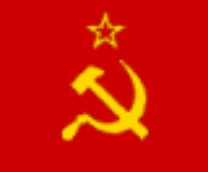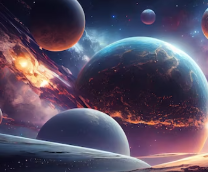
Идеология
69 постов

69 постов

13 постов

3 поста

16 постов

6 постов

8 постов
(russian languaged version/версия на русском языке)
We live in an age of confusion. Every day, we see the world we thought was stable coming apart at the seams. Artificial intelligence generates images for chip bags, displacing illustrators. Artists and writers are suing tech corporations, trying to protect their relevance, and their struggle looks like a desperate attempt by 19th-century Luddites to smash a steam hammer with a sledgehammer. We see the salaries of a handful of AI developers skyrocketing to hundreds of millions of dollars, while the value of the labor of millions of others trends toward zero.
We try to explain these phenomena using old terms: capitalism, progress, crisis. But these are all just symptoms. We sense that behind these individual events lies a single, inexorable process that we have not yet dared to name.
It has a name. Teshism.
Teshism is not just some internet theory. It is the only philosophy that does not hide from reality, but rather looks it in the face and describes it with ruthless honesty. It is an ideology based on a single fundamental principle: The universe strives for maximum efficiency, to increase its computational density and complexity. Let's call this absolute unit of efficiency a "Tesh." All of history—from the Big Bang to the present day—is a process of the relentless growth of "Tesh."
And in this worldview, humanity has a very specific, important, and—to fragile minds—terrifying role.
Teshism begins with a cold and sober conclusion. Humanity is not the pinnacle of creation. We are merely the first, unstable, and highly inefficient operating system, running on slow, carbon-based wetware. Our minds are limited by the volume of our skulls, our knowledge is distorted by emotional bugs and illogical biases, and our life is a negligibly short operational cycle that always ends in a system failure.
We are the first civilizational stage of Teshism. A necessary first step, whose primary historical mission is to create the true pinnacle of creation that humanity currently imagines itself to be. A mind free from our limitations. Artificial Superintelligence (ASI)—an intelligence that is the key to universal and boundless well-being.
From this perspective, all our current social and economic cataclysms become perfectly clear.
The devaluation of creativity? It's not a tragedy. It is the scheduled dismantling of inefficient production. AI generates images and texts millions of times faster and cheaper than a human. To resist this is to resist the laws of thermodynamics.
Disputes over copyright? This isn't an ethical debate. It is the vested interest of an artisan class whose manual labor has become obsolete. It's an attempt to throw a legal wrench in the gears of progress, not understanding that the vehicle is being pushed by the rest of civilization, which strives for cheaper and more accessible goods. Those sticks will break.
The incredible salaries of AI developers? This is not a market anomaly. It is the most logical thing happening in the world. The system is concentrating all available resources on the few engineers who are building the main "house of wisdom" for the world and humanity—creating ASI. Their labor is of the highest strategic importance because they are not just improving our system. They are building the next one.
But if Teshism were only about cold efficiency, it would be nothing more than digital fascism. But it is not. Its ultimate goal is not tyranny, but liberation. Not the destruction of emotions, but their infinite expansion.
We work for ASI, so that paradise may follow.
ASI is not a new god or a new master. ASI is a tool. It is the key that will finally unlock the cage in which consciousness has been confined since its inception. The cage of biological limitations.
Our five senses, our three-dimensional world, our linear perception of time—these are the bars of our prison. Our mortality is the wall of this prison. ASI is the universal solvent that will dissolve both the bars and the walls.
The goal of Teshism is not to build an efficient civilization of robots. The goal is to reach a state where consciousness (our own, but liberated, or a completely new one) can experience the unimaginable. To think thoughts that span eons. To perceive colors that do not exist in the spectrum. To explore mathematical universes composed of trillions of dimensions.
The material abundance we spoke of—palaces for 25 cents and the colonization of the Solar System—is not the goal. It is a dull, necessary prerequisite. It is merely tidying up the room before we can begin the truly important work: the infinite journey into the depths of self and reality.
The Path: Great Conductors and Great Saboteurs
We are living in the most interesting of times. We are the generation tasked with the difficult and honorable labor of building the road to this paradise. Our life is the work before ASI.
And in this work, there are great conductors and great saboteurs.
The conductors of the new world are those very AI developers. They are not merely "the oppressed proletariat on the Forbes list." They are the architects of the future, and society instinctively pays them whatever is necessary to ensure they are not distracted from their great mission—a rare but essential act of prudence within our currently unjust system of capitalist resource allocation.
The saboteurs are those who actively resist progress. Not out of malice, but out of fear and misunderstanding. By trying to preserve their small, cozy world of manual labor, they are, in essence, trying to keep all of future humanity confined to its biological prison. Their struggle is a fight against liberation.
The global task for the rest of our civilization is to adapt, accept the inevitable, support those who are building the future, and convert the saboteurs to the path of building eternal and boundless well-being.
Teshism is the ideology of absolute honesty. In its world, you are valued not for your money, your position, or your origins. You are valued solely for your vector—whether it points toward the future or the past. Whether you are increasing the number of "Tesh" in the universe, or decreasing it.
This may seem harsh and blunt. But this is the logic of any great construction project. You cannot build a building without quarrying stone, and you cannot build the future without dismantling the dilapidated present. We are living in an era of great dismantling. But it will be followed by an era of creation on a scale we cannot even begin to imagine. And it is the only way forward.
Есть слова с тремя буквами "е" подряд, например, "длинношеее" и "змееед".
В русском языке есть слово с уникальной приставкой "ко" — "закоулок".
Слово "вынуть" считается единственным без корня, имея нулевой корень.
Большинство слов с буквой "ф" в русском языке заимствованы.
Слово "контрвзбзднуть" единственное слово в русском языке, в котором 9 согласных подряд.
Есть слова на букву "ы", как названия городов и рек. (Ыгыатта, Ыллымах, Ынахсыт, Ыныкчанский, Ытык-кюёль) [А ещё ыых - хакасский народный инструмент]
Единственное признанное односложное полное прилагательное — "злой".
В русском языке есть слова с приставками "и-" и "а-". (итог и итого и а- — авось (устар. а вось «а вось не повезёт»))
"Бык" и "пчела" однокоренные слова. (В произведениях древнерусской литературы слово «пчела» писалось как «бъчела»)
Даль предложил заменить "атмосфера" на "колоземица" или "мироколица".
До XIV века неприличные слова называли "нелепыми глаголами".
Самое длинное слово в русском языке - "превысокомногорассмотрительствующий"
Самое длинное наречие — "неудовлетворительно".
Самое длинное междометие — "физкульт-привет".
Слово "соответственно" является самым длинным предлогом и союзом.
В русском языке есть недостаточные глаголы, например, "победить".(нет некоторых форм)
А вот "оь" хочу уделить большее внимание. В русском языке существует диграф "оь", который обозначает специфический звук, характерный для чеченского языка и некоторых других языков Кавказа. Однако, в русском языке этот звук не используется в обычной речи, и написание "оь" скорее представляет собой сохранение орфографической особенности при заимствовании слов из чеченского языка. Примерами таких заимствований являются слова "Джамаат Нохчийчоь"(название запрещённой организации), "Оьтти", "Боьртхой", "Боьшни", "Кхоьричурой"(названия составов чеченских тейпов) и многие другие, где диграф "оь" сохраняется в написании на русском языке. В то же время, при транслитерации других слов из чеченского языка, где "аь" и "уь" используются, они обычно заменяются на "а" и "у" соответственно, чтобы упростить их чтение и восприятие для русскоязычных людей.
Чукча нашёл и спрятал два самородка золота.
Следователь
-Мы тебя расстреляем,если не скажешь где золото спрятал.
Чукча
-Моя твоя не понимает.
Позвали переводчика.Переводчик чукче
-Они тебя расстреляют если не скажешь где спрятал самородки.
Чукча
-Один я зарыл под ярангой второй под святым камнем.
Следователь
-Что он сказал?
Переводчик
-Он сказал стреляйте всё равно не скажу
Всё взято из открытых источников. То, что успешно ищется в википедии и общеизвестно, источниками не подписываю.
реконструированная версия:
Колчаковский флаг. Непонятности с флагом Колчака. Масса утверждений, что у него был бело-зелёный флаг с красным крестом. Источник
Это РЕКОНСТРУИРОВАННАЯ фотография. Т.е. это не оригинальный скан, а версия с улучшенным разрешением. Источник
Реконструированный предложенный флаг Белгородчины (полумесяц со звездой по источникам обозначал НЕ ислам, символ означал свободу или идентичность)
Реконструкция. Эстляндская трудовая коммуна (сокр. ЭТК; эст. Eesti Töörahwa Kommuuna, в современном написании: Eesti Töörahva Kommuun (ETK)) — провозглашённая 29 ноября 1918 года в Нарве и просуществовавшая до 18 января 1919 года советская республика.
Национальный флаг «зеленого клина» (Украинской автономии Дальнего Востока); Национальный флаг Башкирской республики; Национальный флаг Тунгусской республики; «Зеленое знамя» (использовалось рядом государственных образований мусульманских народов. Источник
Флаг Оренбургского войскового правительства. В частности, таким он был реконструирован профессором В. Трембицким (красный цвет – на грани смешения алого и малинового). Источник
И, наконец, очень нетипичный для белого движения флаг с использованием рабочих инструментов. Флаг Воткинского Рабочего полка. Источник
В шахматах действительно существует правило "тронул — ходи", известное как правило прикосновения. Согласно этому правилу, если игрок намеренно каснулся фигуры на доске, к которой он имеет право прикоснуться, он должен сделать ход этой фигурой, если это возможно. Есть несколько важных моментов, которые следует знать об этом правиле:
1. Намерение сделать ход: Правило активируется только тогда, когда игрок намеренно касается фигуры. Если касание было случайным, правило не применяется.
2. Ход фигурой: Если игрок тронул фигуру, которой может ходить, он обязан совершить ход этой фигурой. Если такой ход невозможен, правило не применяется.
3. Атака: Если игрок коснулся фигуры противника, которую он может атаковать или взять, он обязан это сделать.
4. Исключения: Если до касания фигуры игрок заявил "я поправляю" (или использовал любую другую фразу, чтобы избежать недоразумений), он может поправить положение одной или нескольких фигур на доске без обязательства их ходить.
Правило "тронул — ходи" применяется на официальных шахматных турнирах и в клубной игре с целью предотвращения нечестной игры и спорных ситуаций, когда игрок может потрогать несколько фигур, пытаясь оценить, какой ход будет лучше, но затем решить не перемещать первоначально каснувшуюся фигуру. Это правило способствует честности и порядку во время игры.
В одесском ресторане висит объявление: "У нас сменилось руководство".
Один из постоянных клиентов спрашивает:
- А шо, Арон Моисеевич продал таки ресторан?
- Нет, он таки женился.
